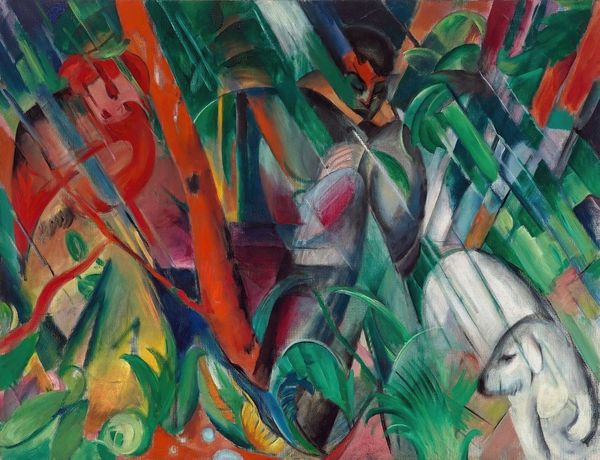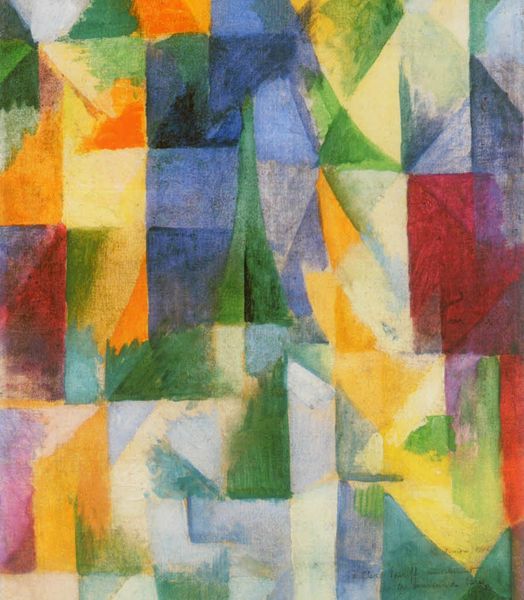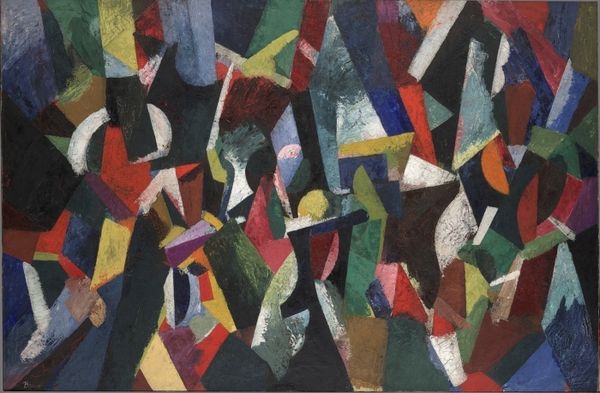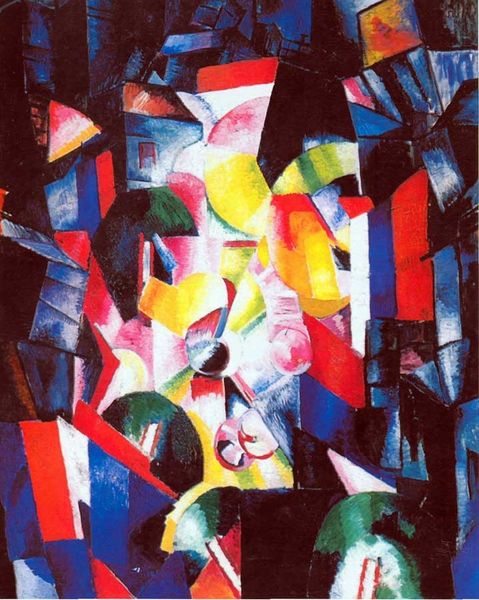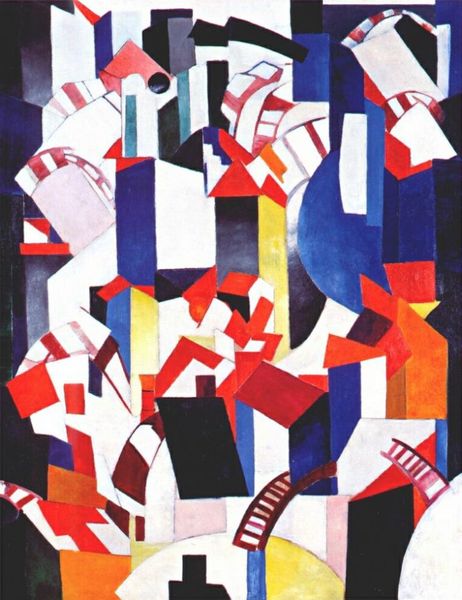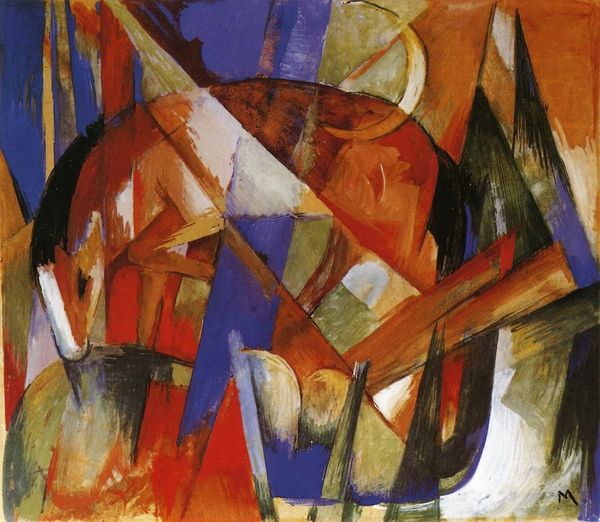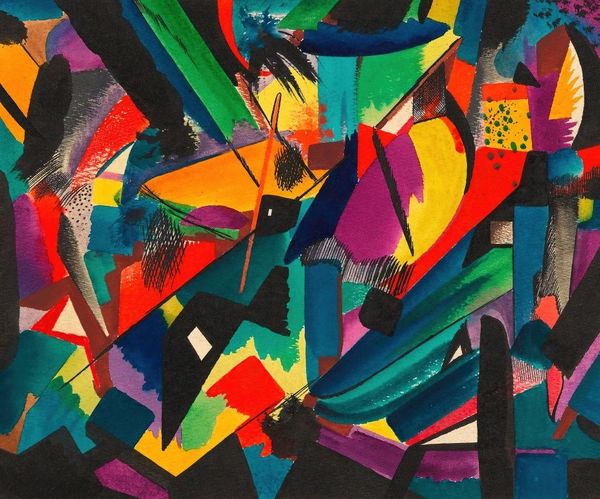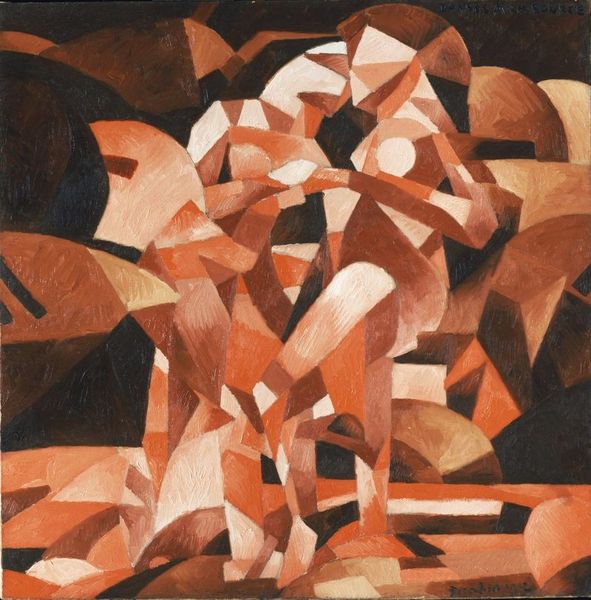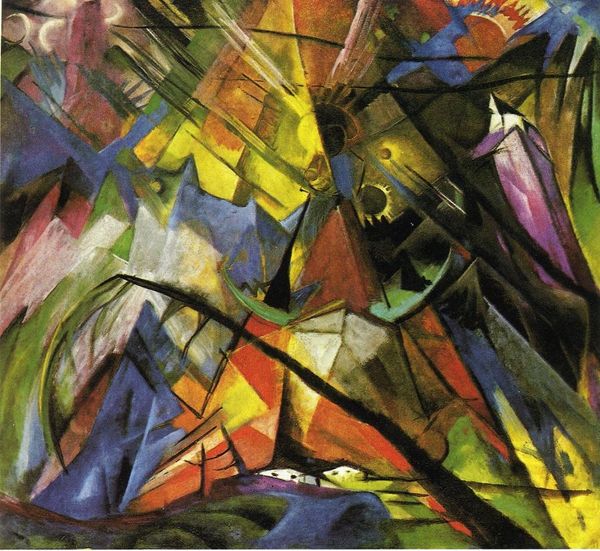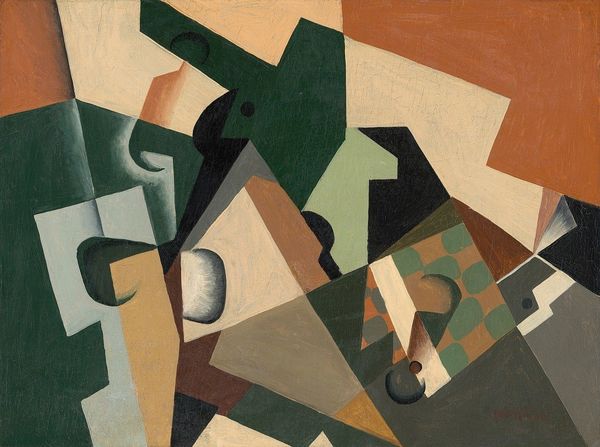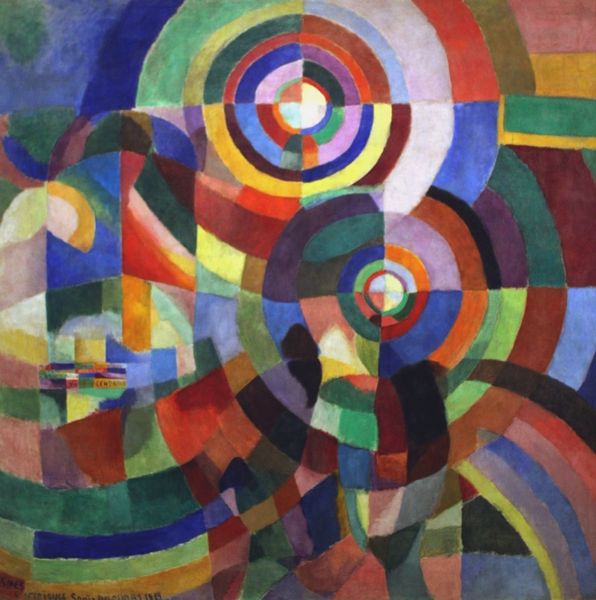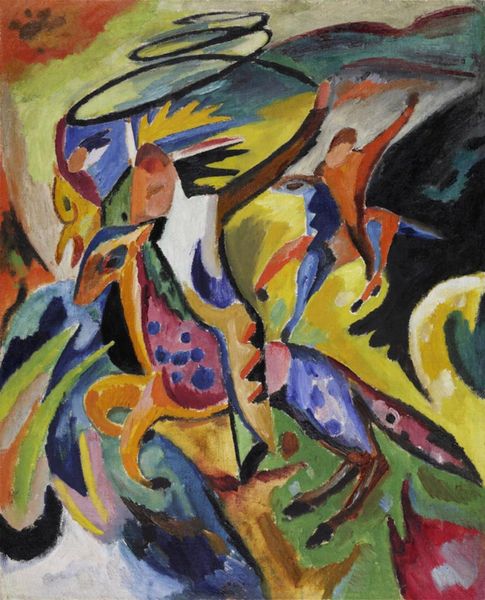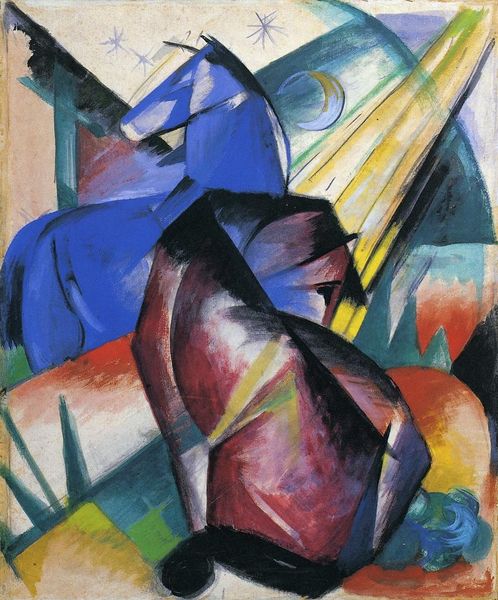
Copyright: Public Domain: Artvee
Editor: This is "Happening," painted in 1919 by Johannes Molzahn. It feels almost like looking at a shattered mirror, but the vibrant colors give it an unexpected energy. What symbols or meanings do you think Molzahn was trying to convey here? Curator: It's a fantastic observation about the shattered mirror. Notice how Molzahn deploys geometric forms – circles, triangles, squares – that seem to both build and deconstruct at the same time. Consider what these basic forms evoke. Do they seem industrial? Spiritual? Remember, this was painted in 1919, right after the trauma of World War I. Editor: So, is the "Happening" maybe more chaotic and representative of postwar Europe than I initially thought? It does feel like a reaction to something intense, a rupture. Curator: Exactly. Think of these shapes as stand-ins for the world itself, fractured by conflict. And what do colours evoke? Look at the boldness of the red and blue – colors with potent associations. Are these revolutionary colors? Colors of nationhood? The title, "Happening", also implies a spontaneous event, a break from the established order. Editor: That’s fascinating! I hadn't considered the specific context of its creation. Seeing these shapes as fractured representations, not just abstract forms, gives them more power. And the colors... definitely less random now! Curator: Artworks often absorb and retransmit social turmoil into striking symbolism. They become encoded documents that reward careful unpacking. Can you start to think of modern symbolism? Editor: Absolutely. It's amazing to see how much history and emotion can be embedded within abstract forms. Thanks; I will start researching the references and symbolism to expand my understanding of this artistic language! Curator: My pleasure! Every image is a universe unto itself, awaiting our interpretation.
Comments
No comments
Be the first to comment and join the conversation on the ultimate creative platform.
